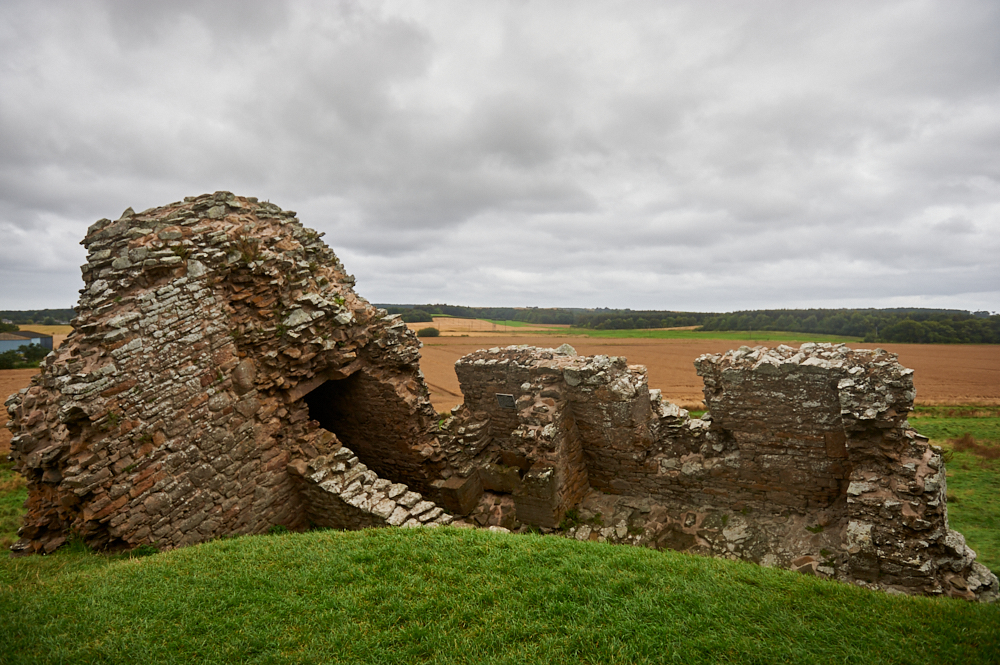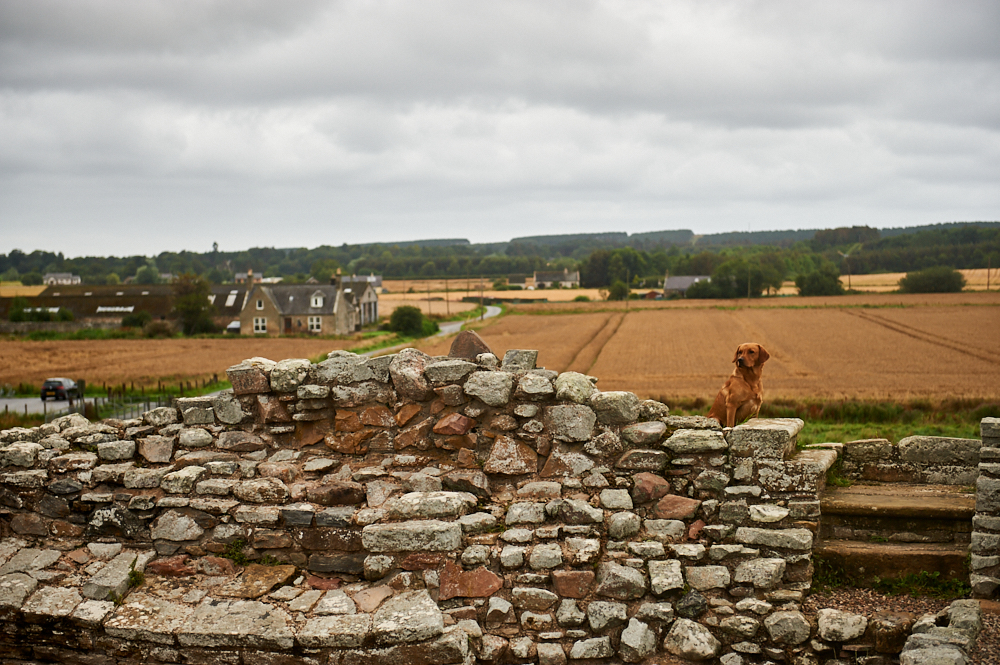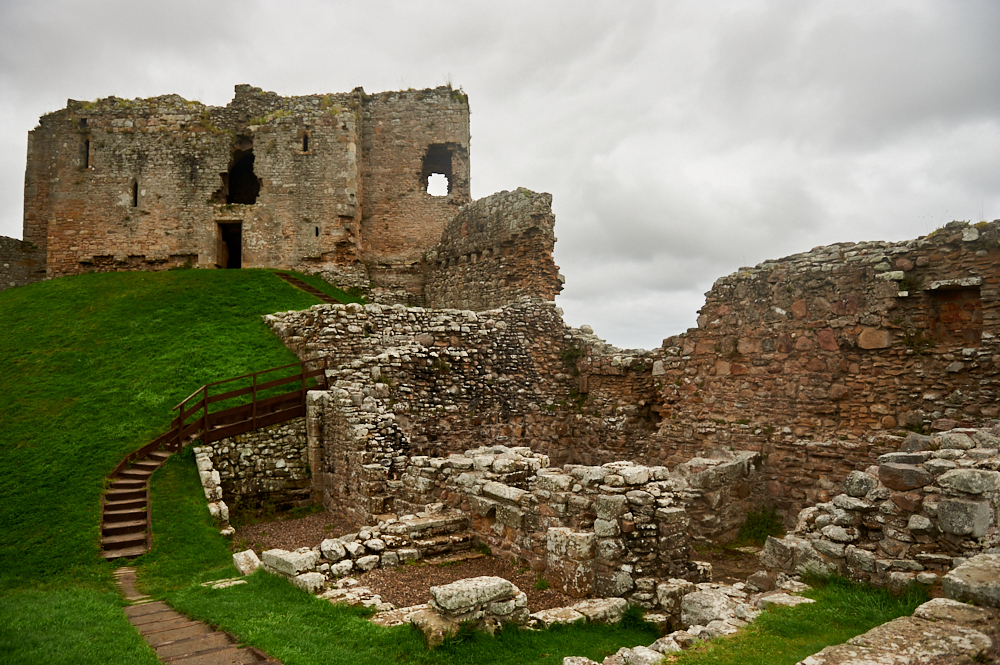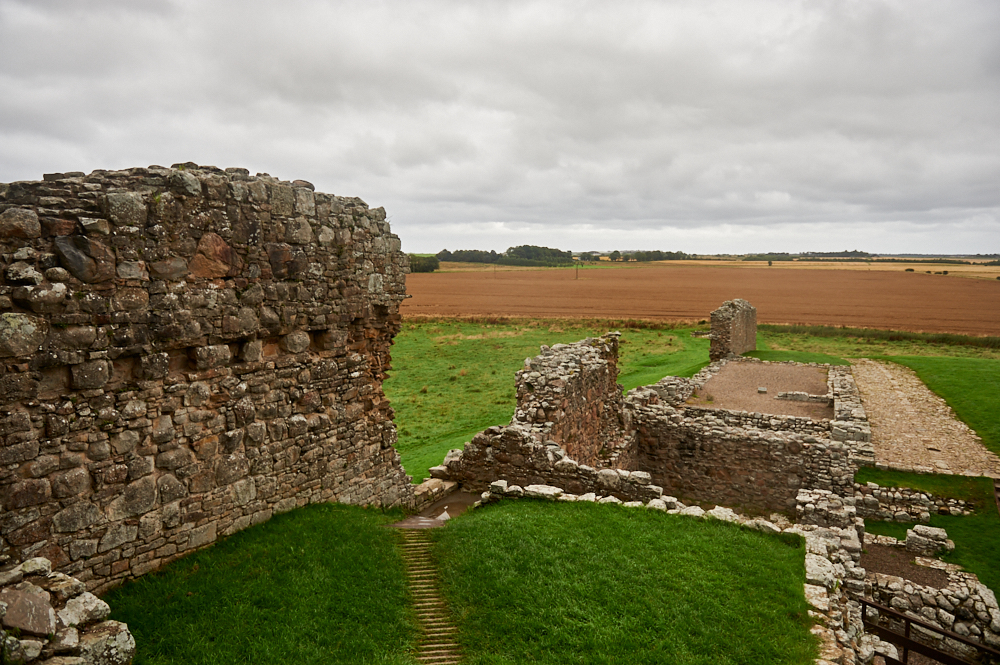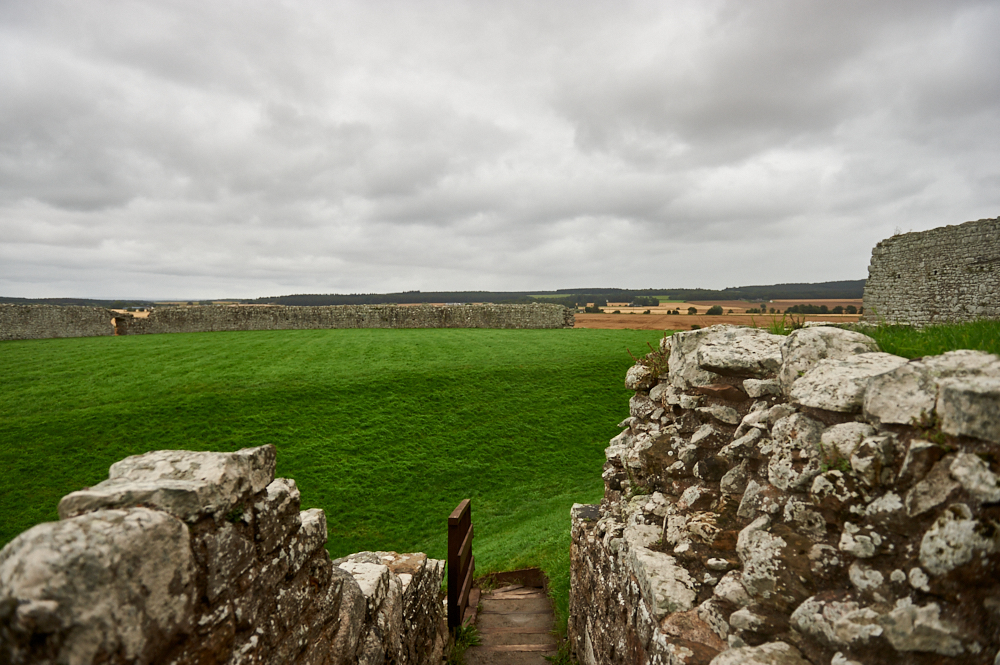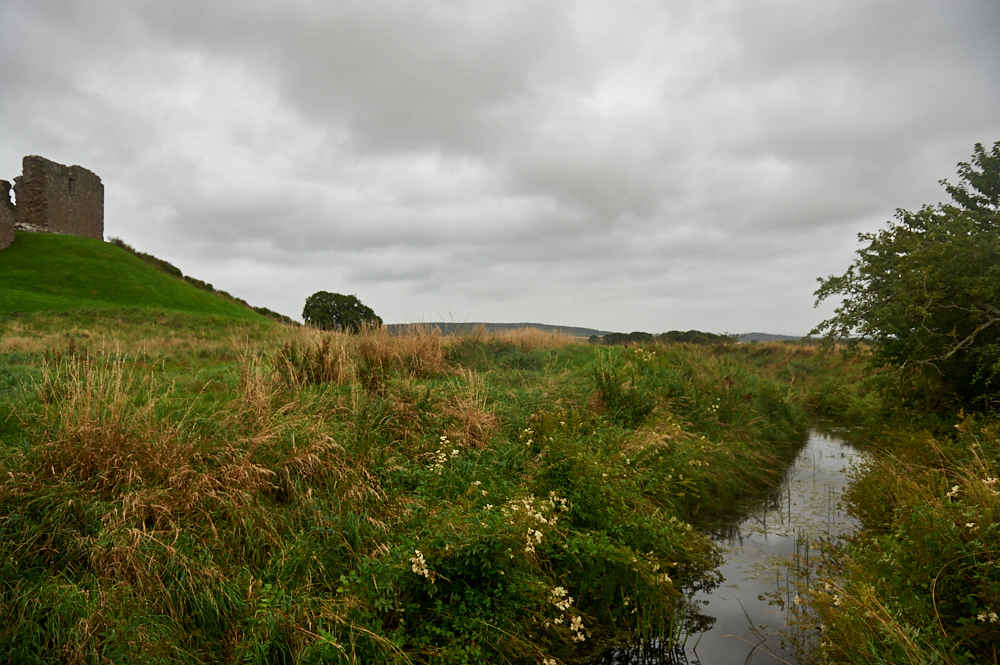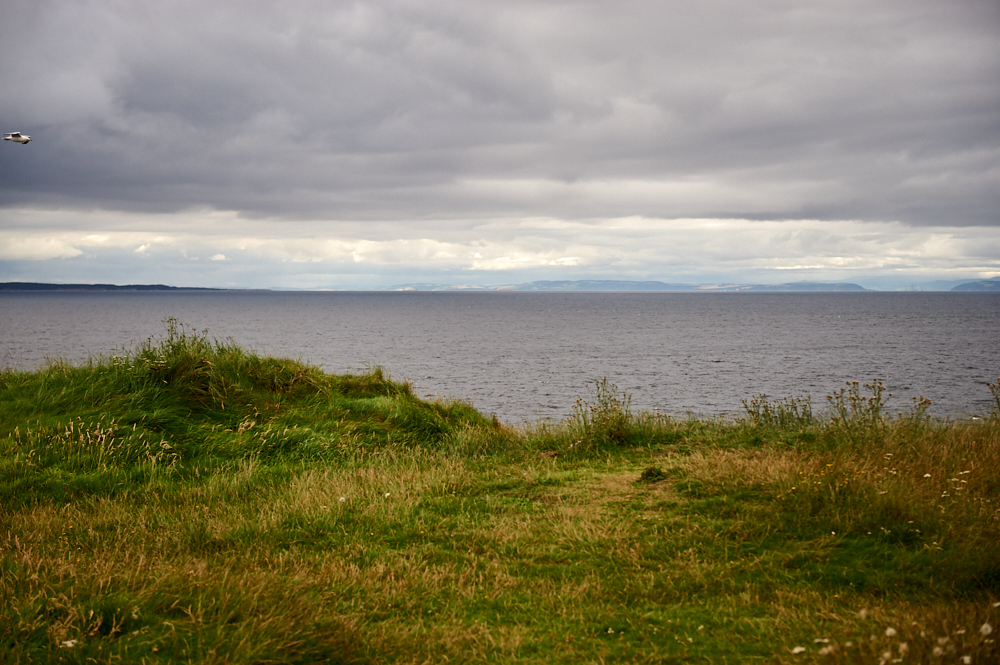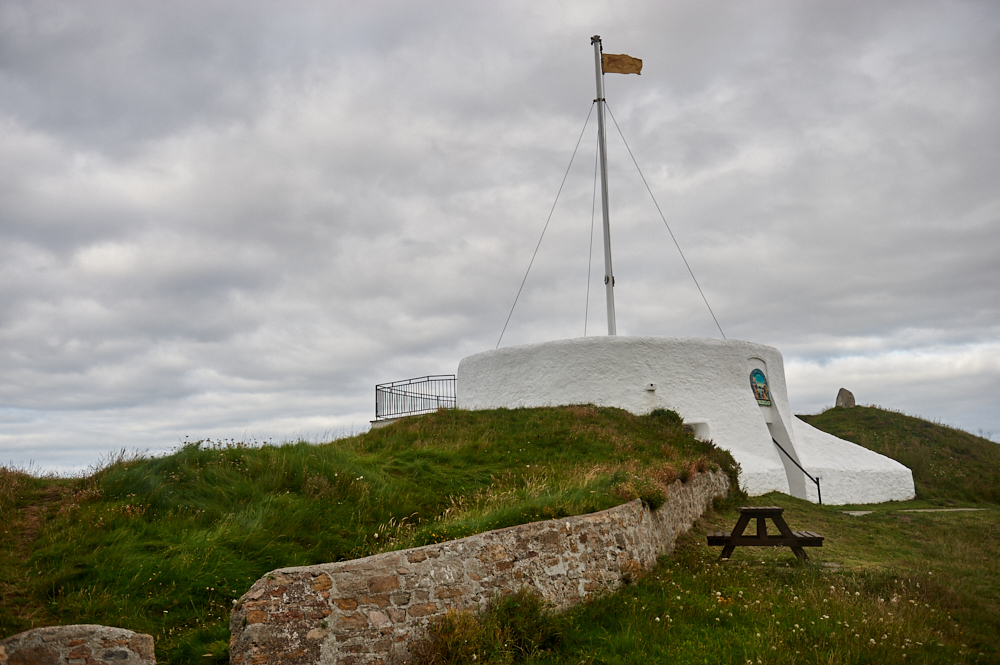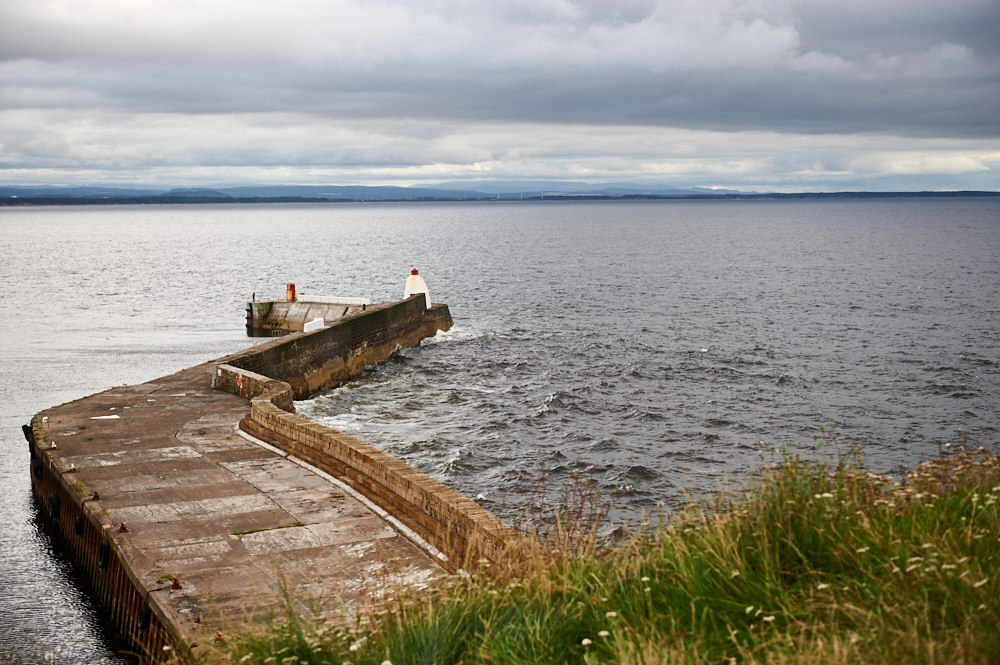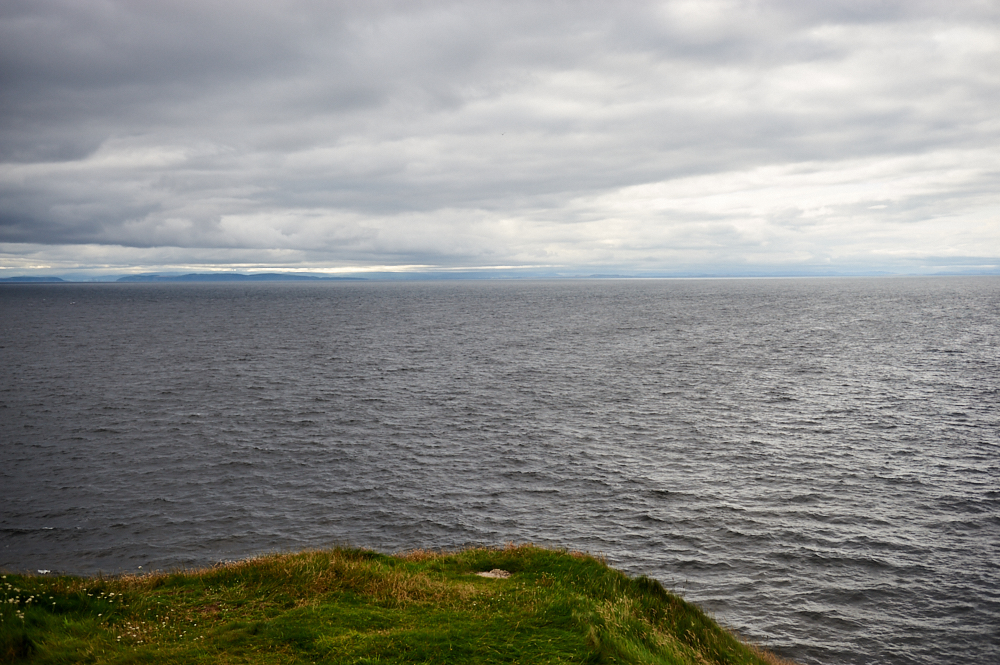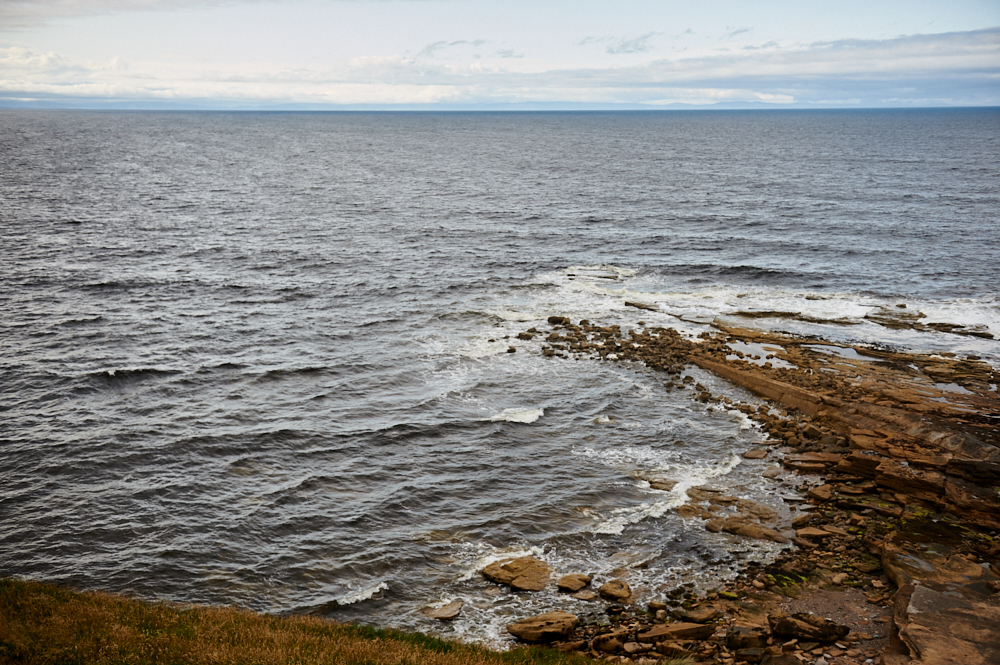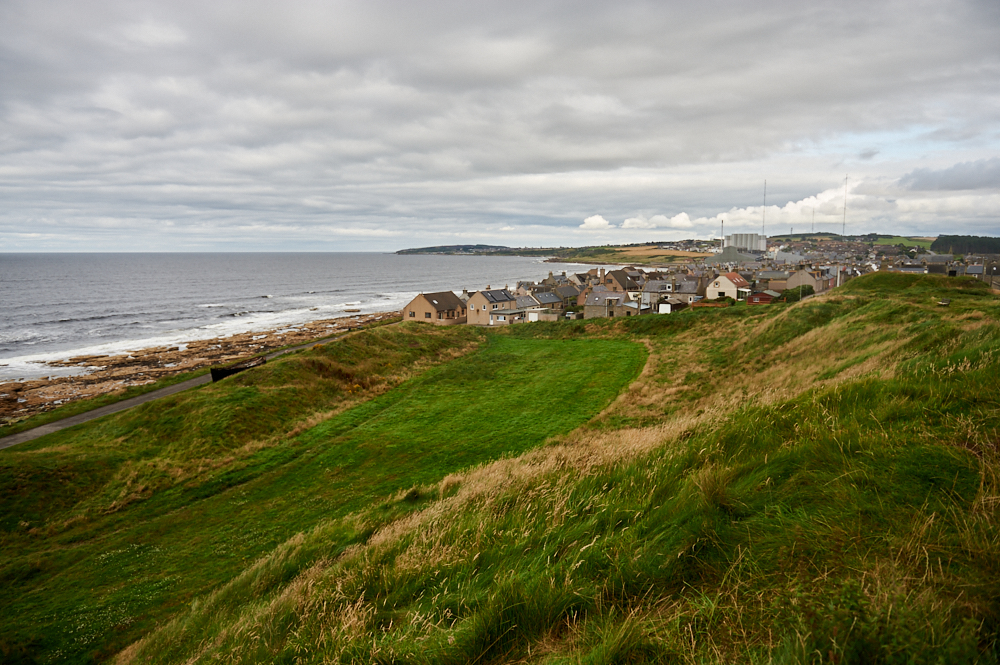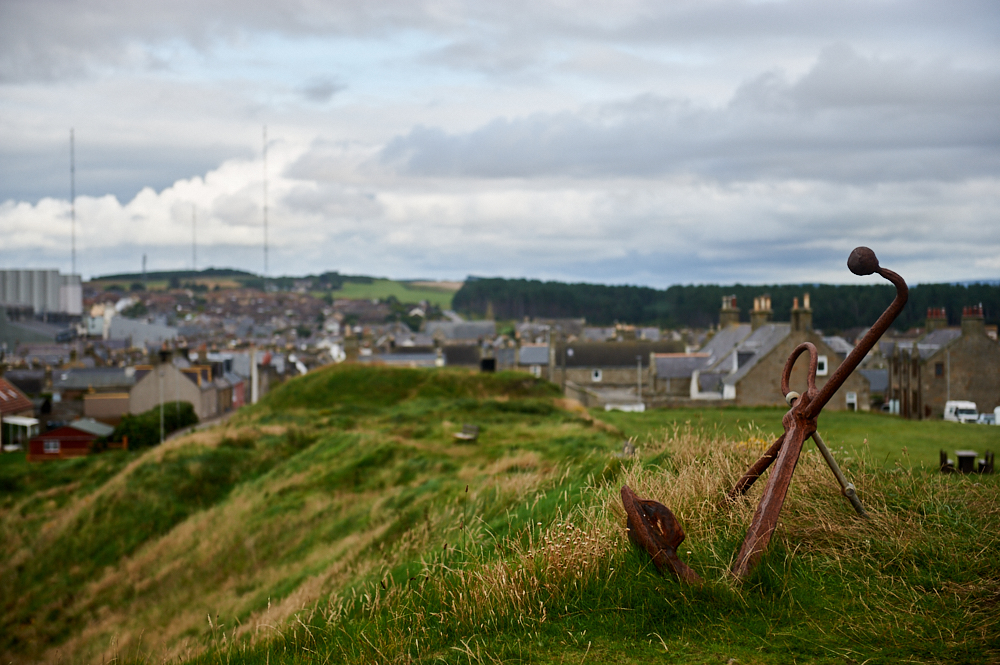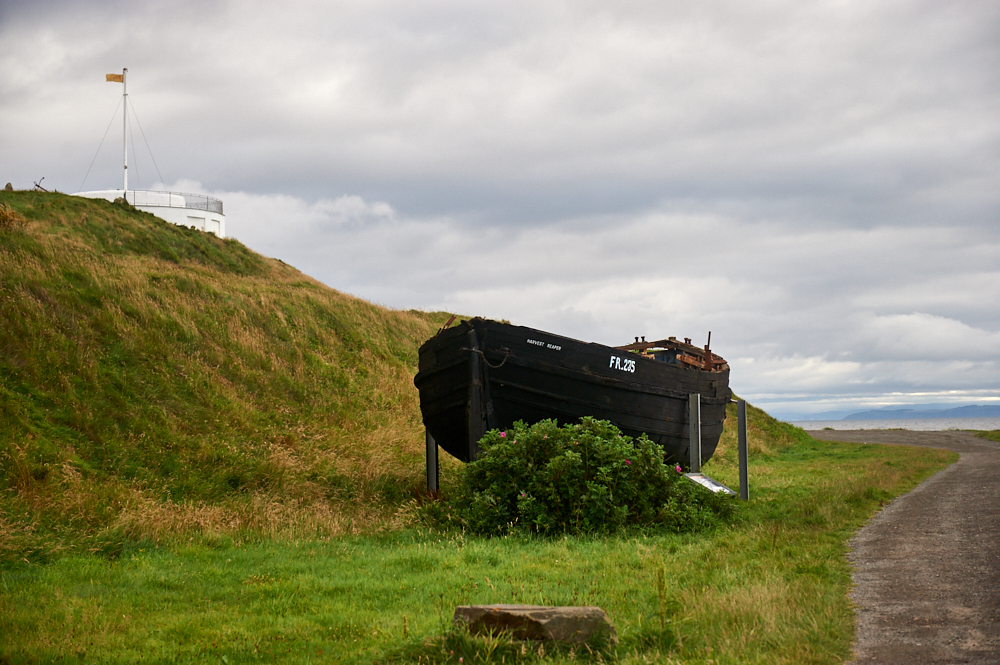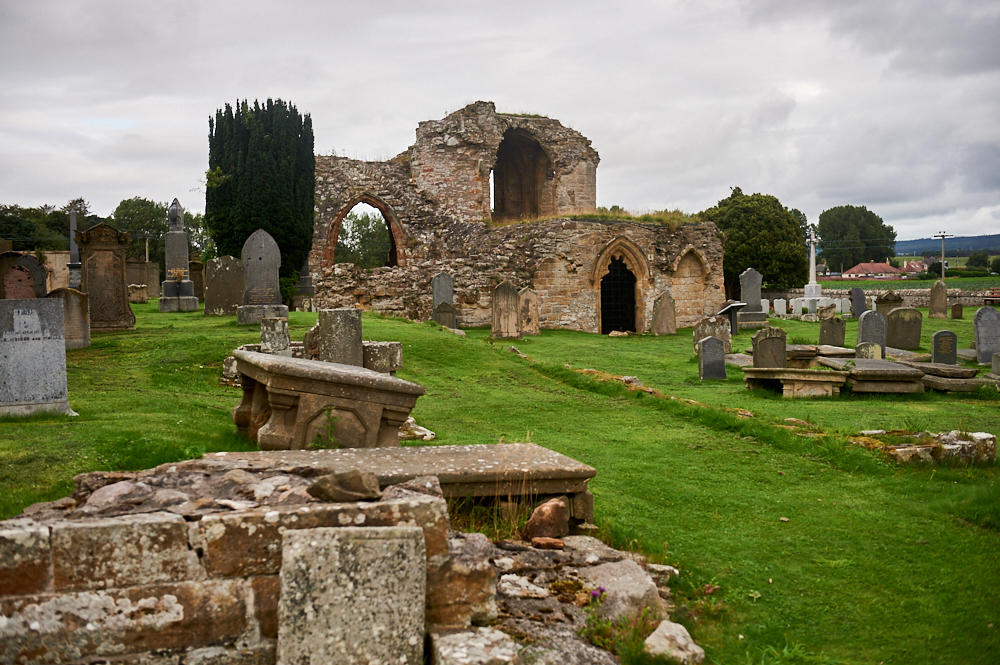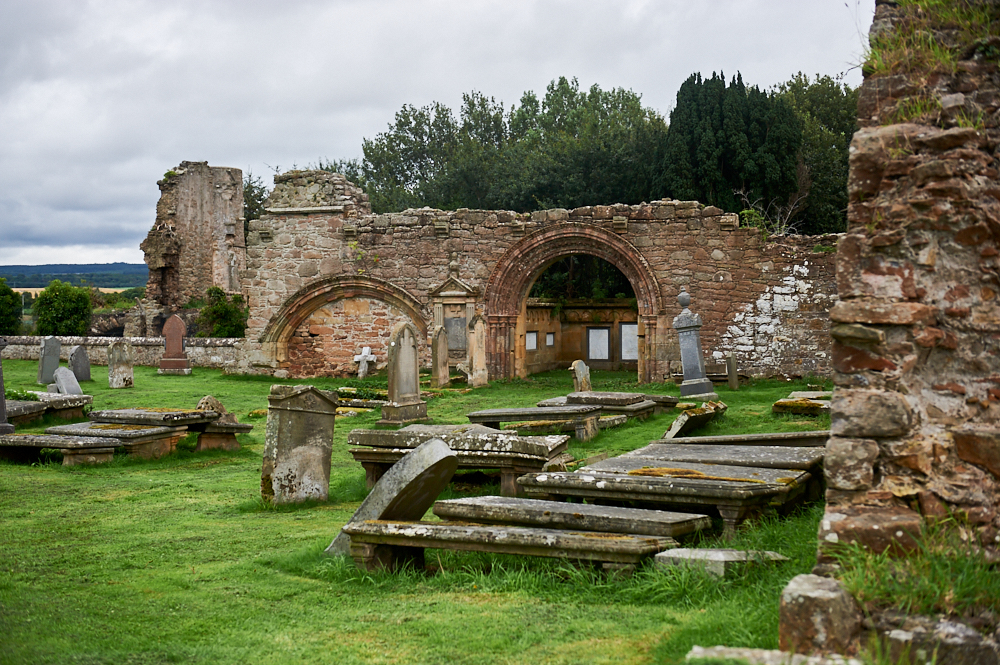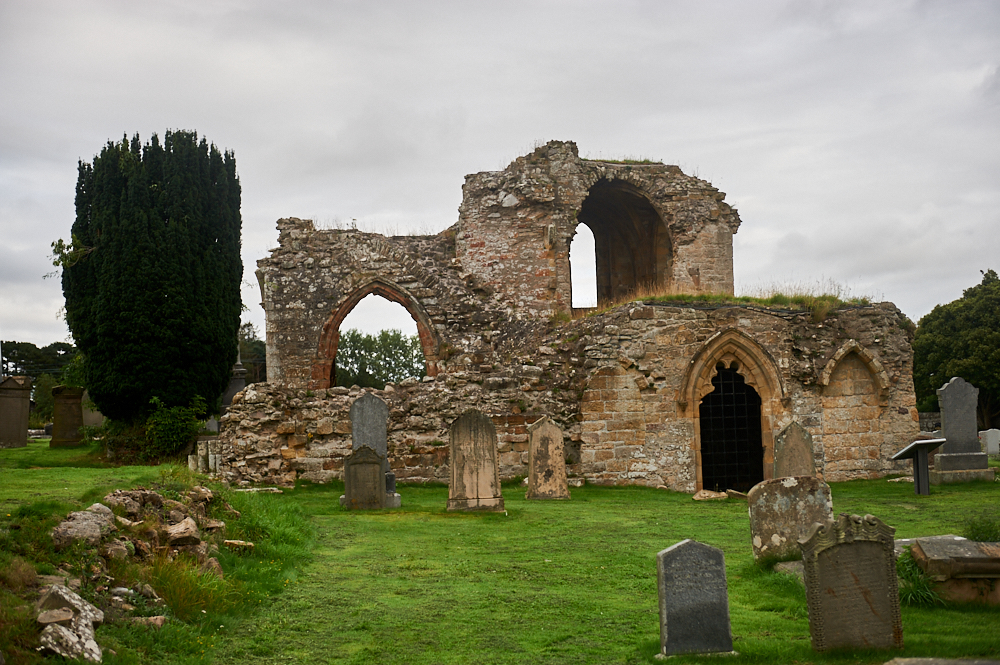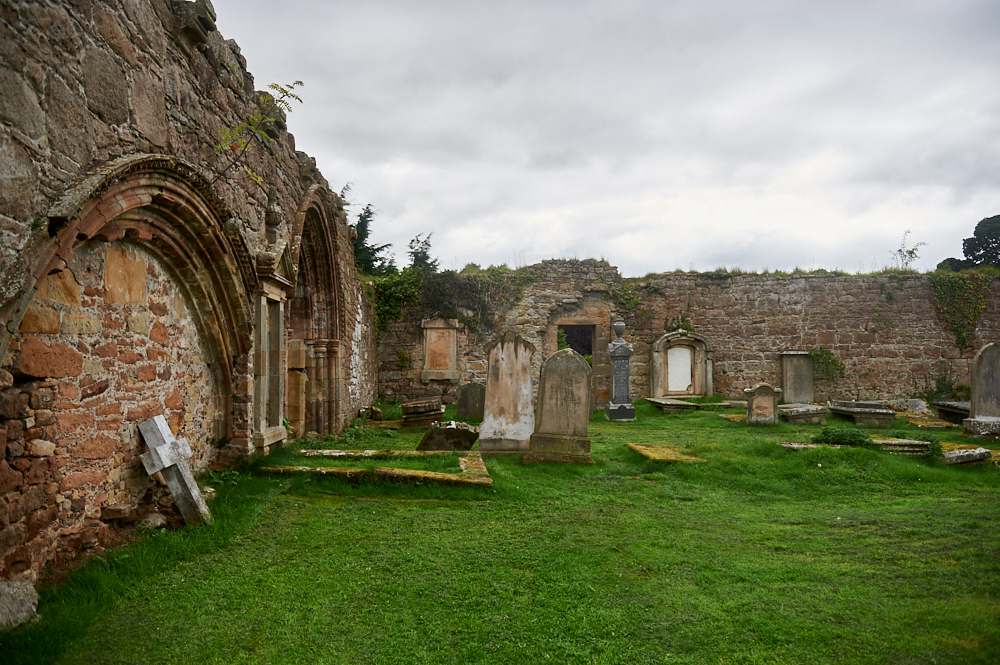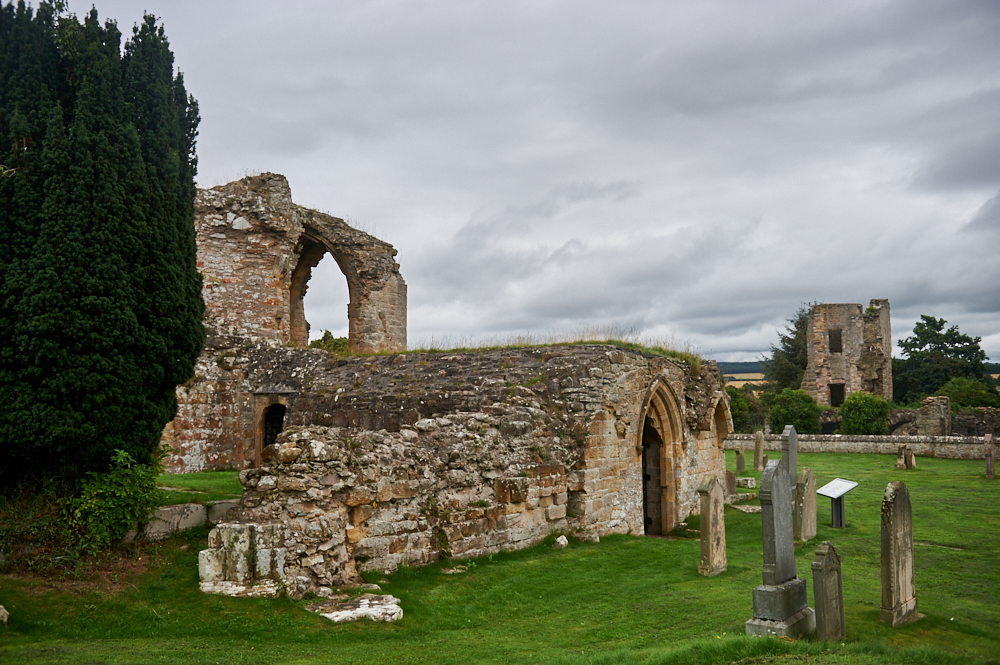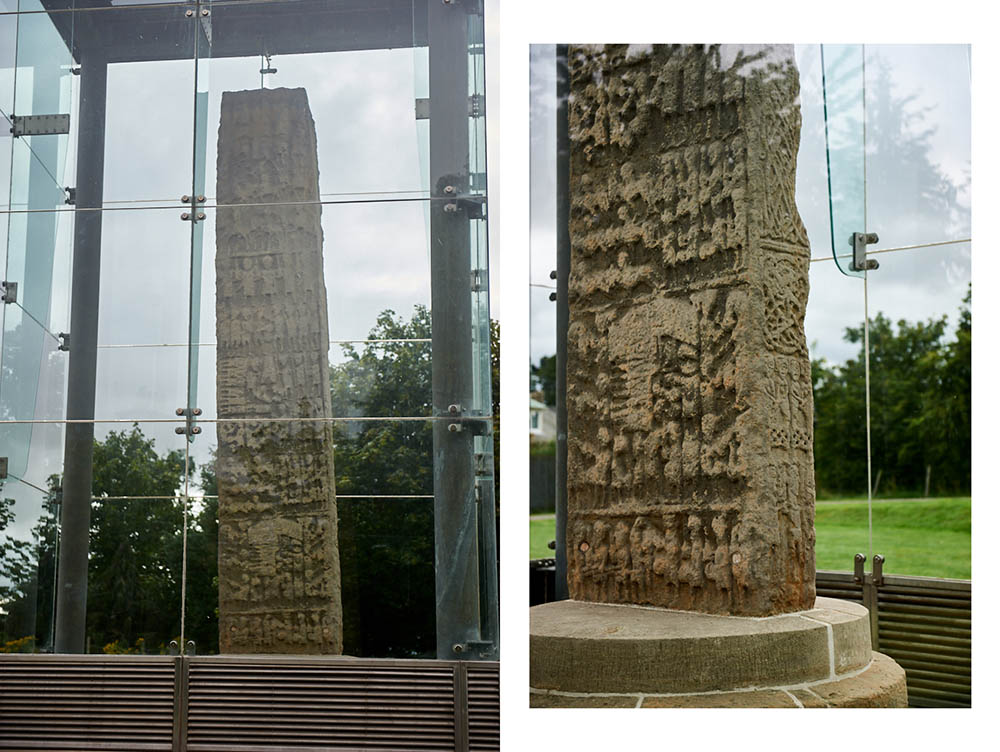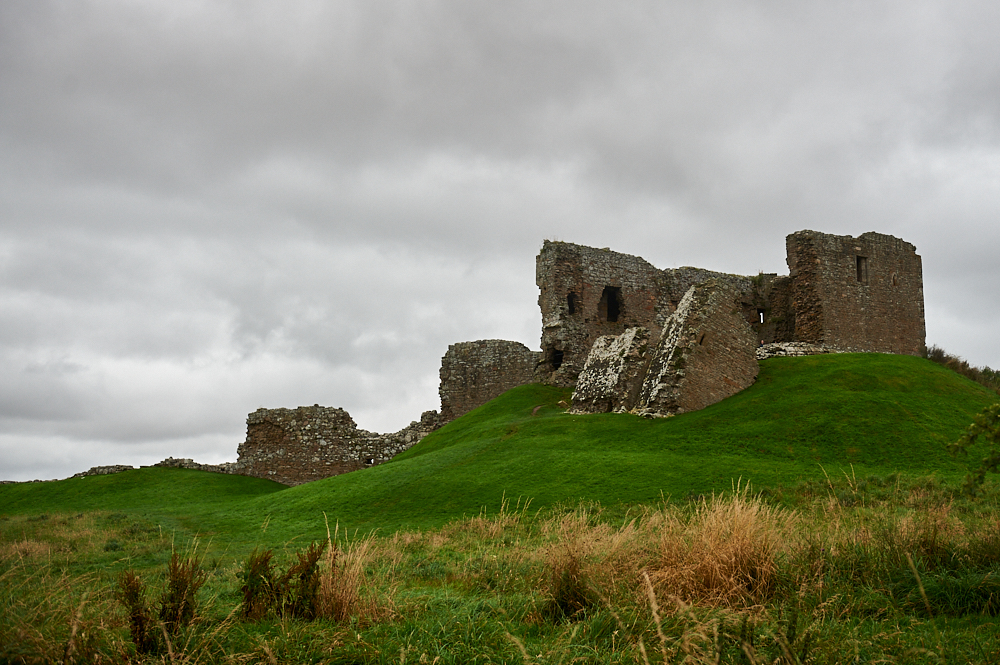
Duffus Castle, the medieval stronghold of the Moray family was just about two miles from my home at the Moray Coast Hopeman. It is known as one of Scotland´s finest motte and bailey castles.
Mottes were common in Scotland the 1100s and 1200s, before they were replaced by stone castles. They were fortifications, usually consisting of a wooden keep on top of an artificial earthwork mound. Some also had an enclosed courtyard or bailey, containing additional wooden buildings, protected by a ditch and palisade. (Historic Enviroment Scotland)
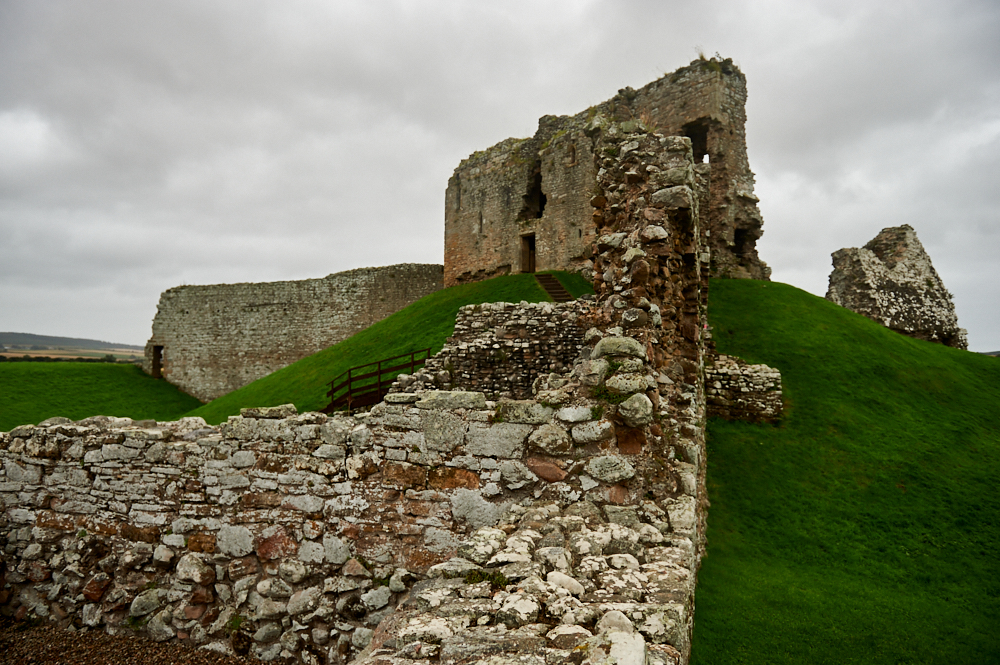
The castle we see today was built in the 1300s, replacing an earlier timber fortress and felt to ruin after it was abandoned in 1705. Duffus Castle is situated on the Laich of Moray, which became a very fertile area after Spynie Loch and the surrounding marshland had been drained.
The motte is a huge man-made mound, with steep sides and a wide ditch separating it from the bailey. The whole site is enclosed by a water-filled ditch, which is more a mark of its boundary than it is a serious defensive measure. (Historic Enviroment Scotland)
Duffus Castle had been built by Freskin, a Flemish man who was sent there by King David I in 1130 to represent the crown. He built an earthwork-and-timber castle on the Duffus estate. His son William took the title of ‘de Moravia’, the meaning “of Moray”. By 1200 the Moray family had become the noblest and influential family in northern Scotland.
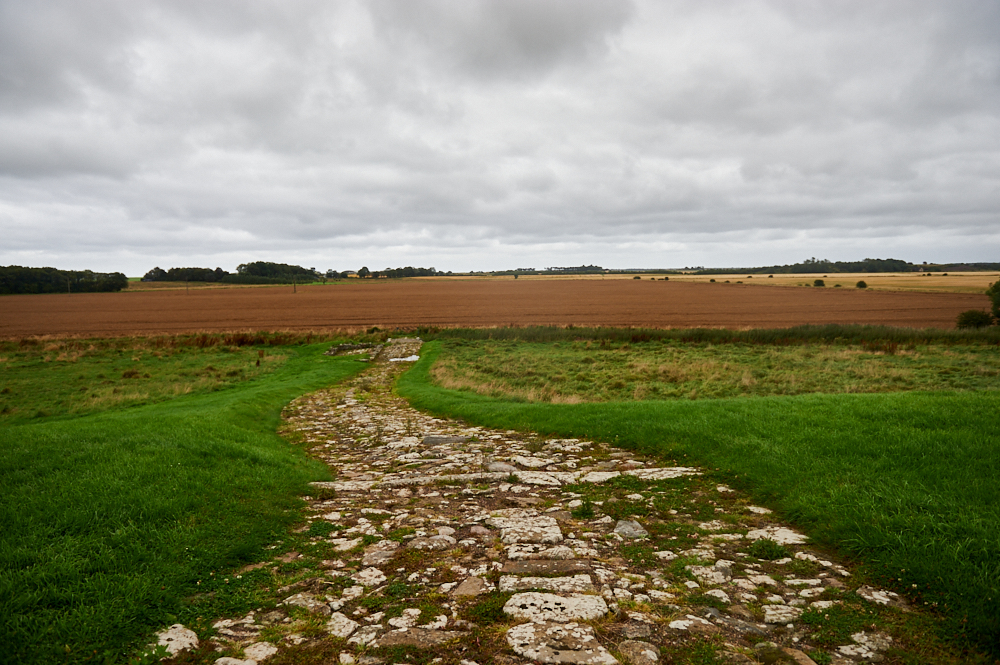
Around 1270 the castle passed Sir Reginald Cheyne the Elder, Lord of Inverugie, who probably built the square stone keep on top of the motte and the walls around the courtyard. By 1350 the castle belonged to a younger son of the Earl of Sutherland through marriage, by then the stone square probably had started to slip down the mound and a new residence was built in the north of the courtyard.
At the end of the 17th century, Lord Duffus moved to Duffus House and Duffus Castle fell into decay.
